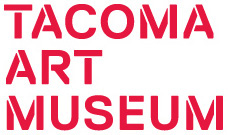Margaret Camfferman
Margaret Camfferman studied at the Minneapolis School of Fine Arts, the New York School of Applied Arts and Design, and with modernist painter Robert Henri (1865–1929). When she and her husband Peter Camfferman (1890-1957) settled in the Seattle area in 1915, they became members of Seattle’s avant-garde art association called the Group of Twelve. Camfferman also was an early member of the Women Painters of Washington.
Camfferman had an active Northwest exhibition history, including a solo exhibition at the Seattle Art Museum in 1935, and exhibitions at the San Francisco Art Museum and the Palace of the Legion of Honor. She also was a dedicated teacher. She and her husband established an art colony at their home on Whidbey Island and had close ties to the art department at the University of Washington.
Camfferman began experimenting with modernist ideas long before many of her Northwest artist contemporaries. She embraced the move away from realistic painting to artworks that manipulated space, color, technique, and subject to convey a variety of meanings. She was particularly influenced by the work of post-impressionist artists including Paul Cézanne (1839-1906) and cubists such as her instructor André Lhote (1885–1962).


